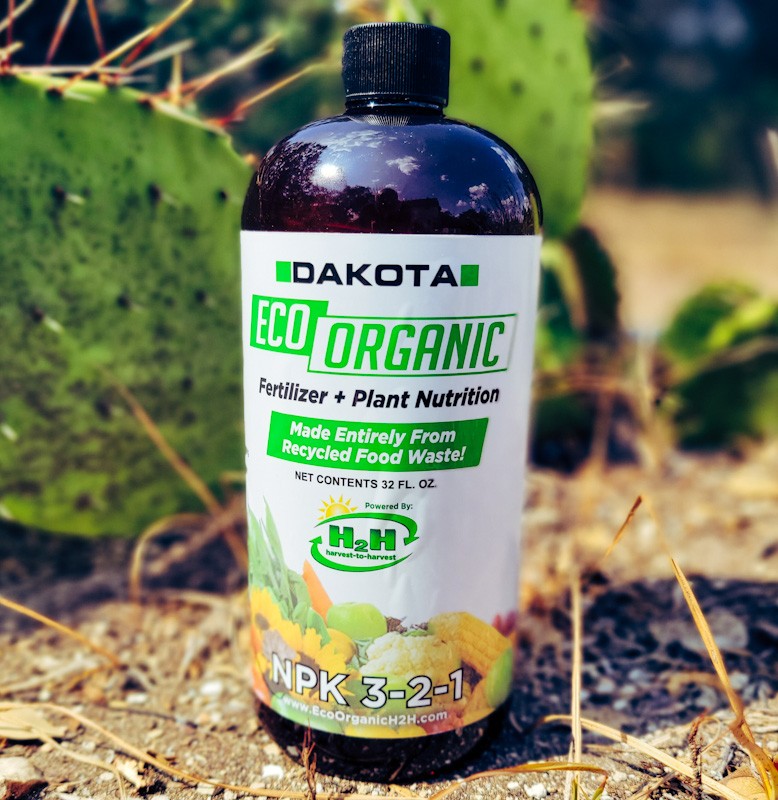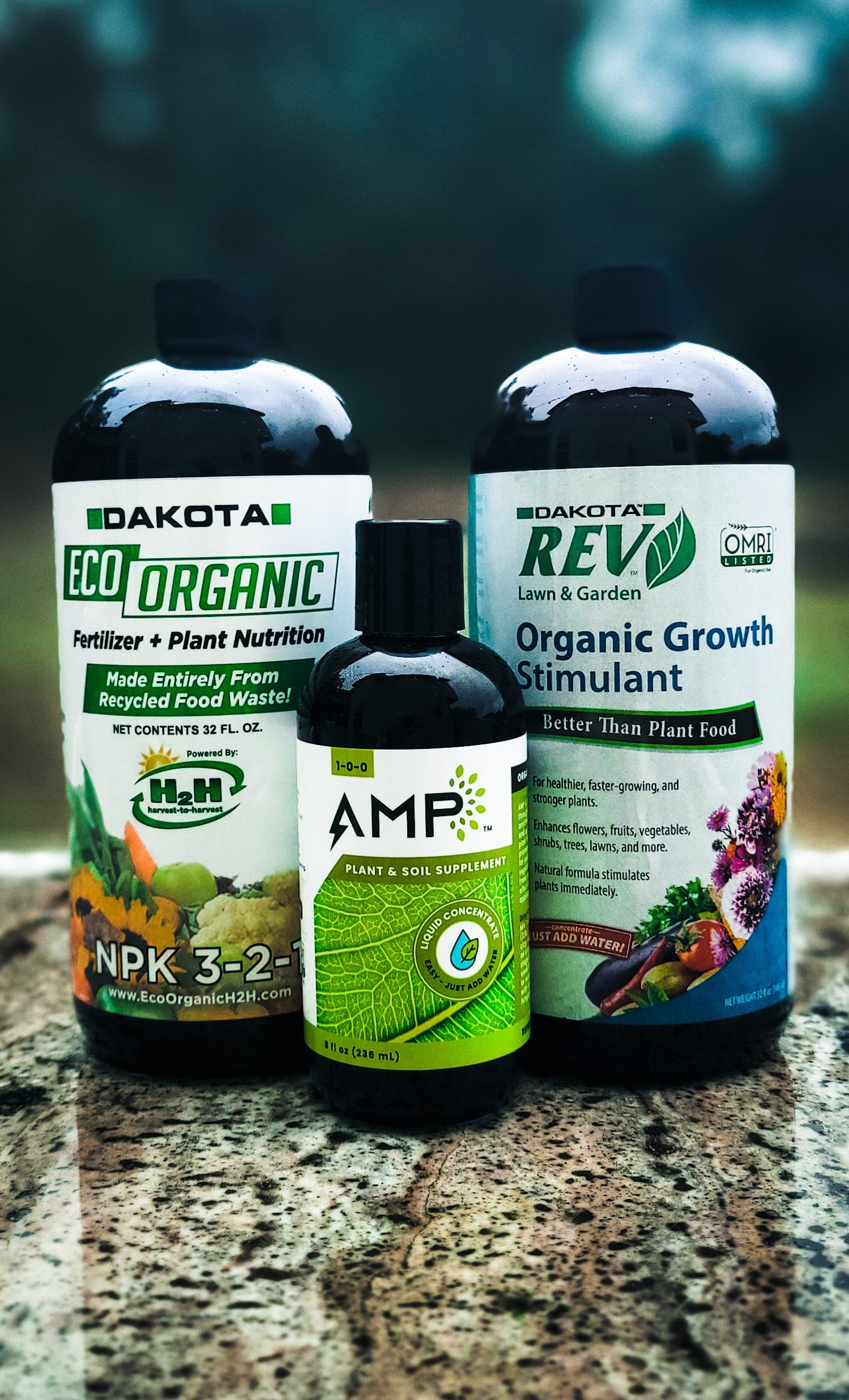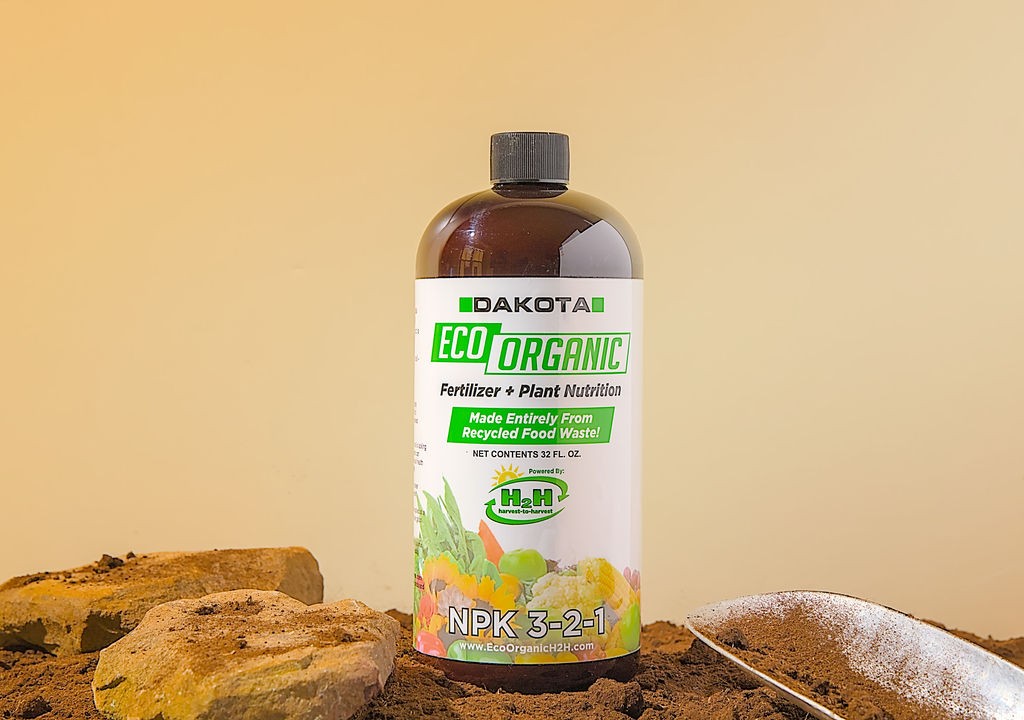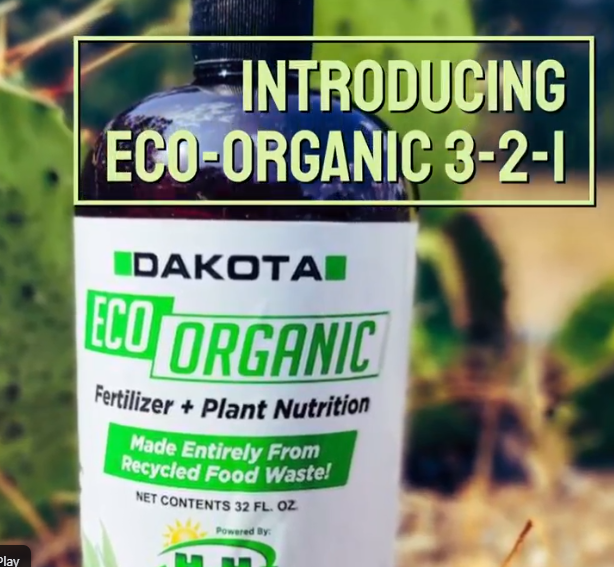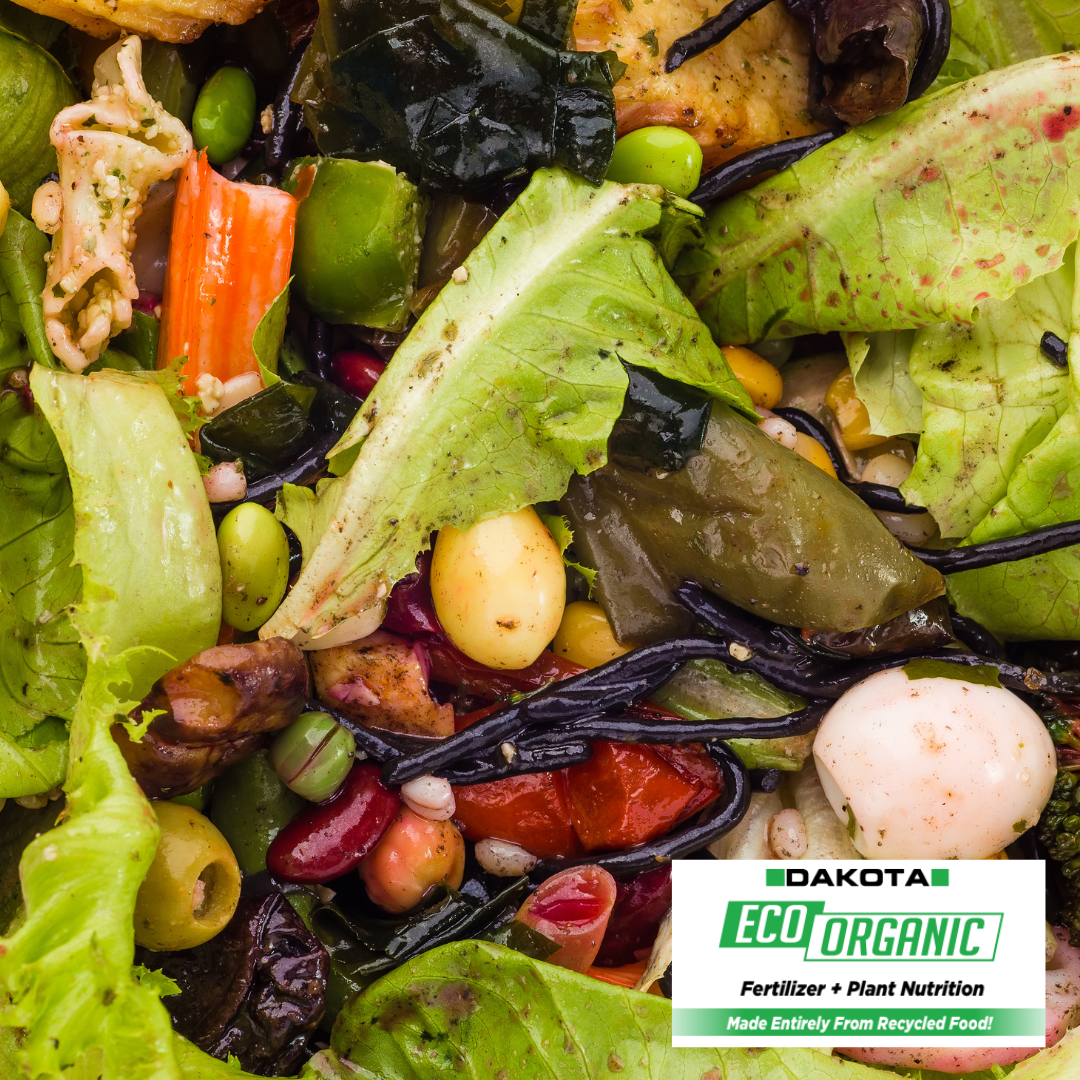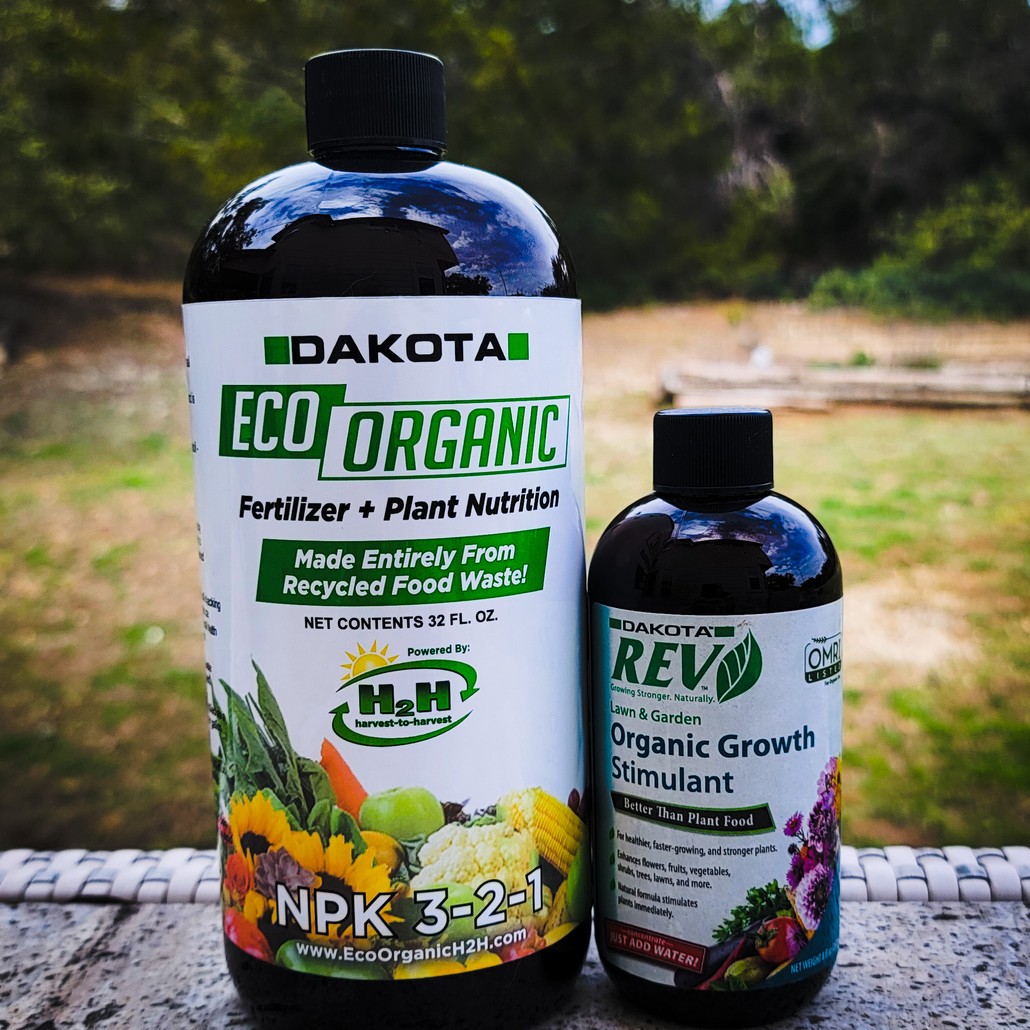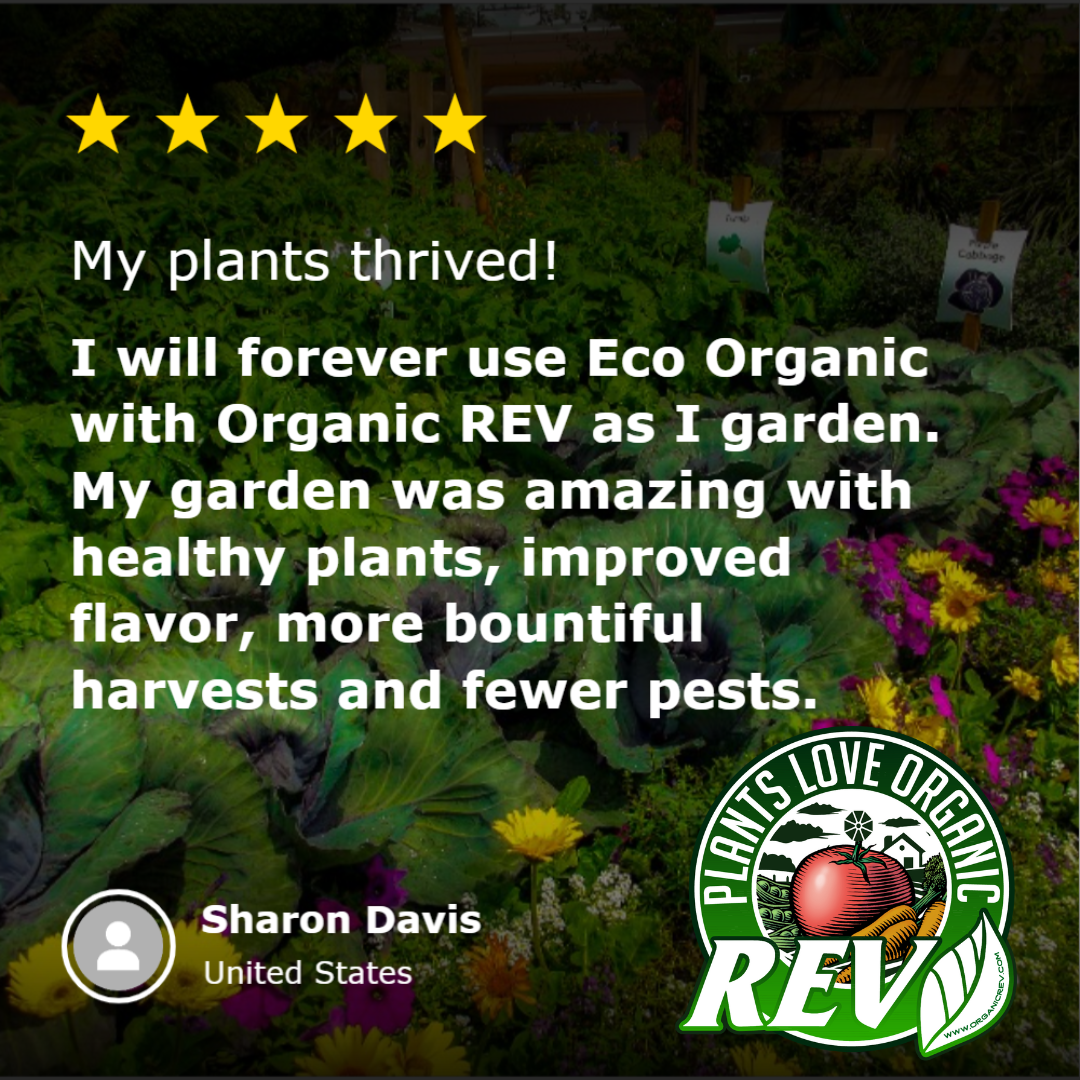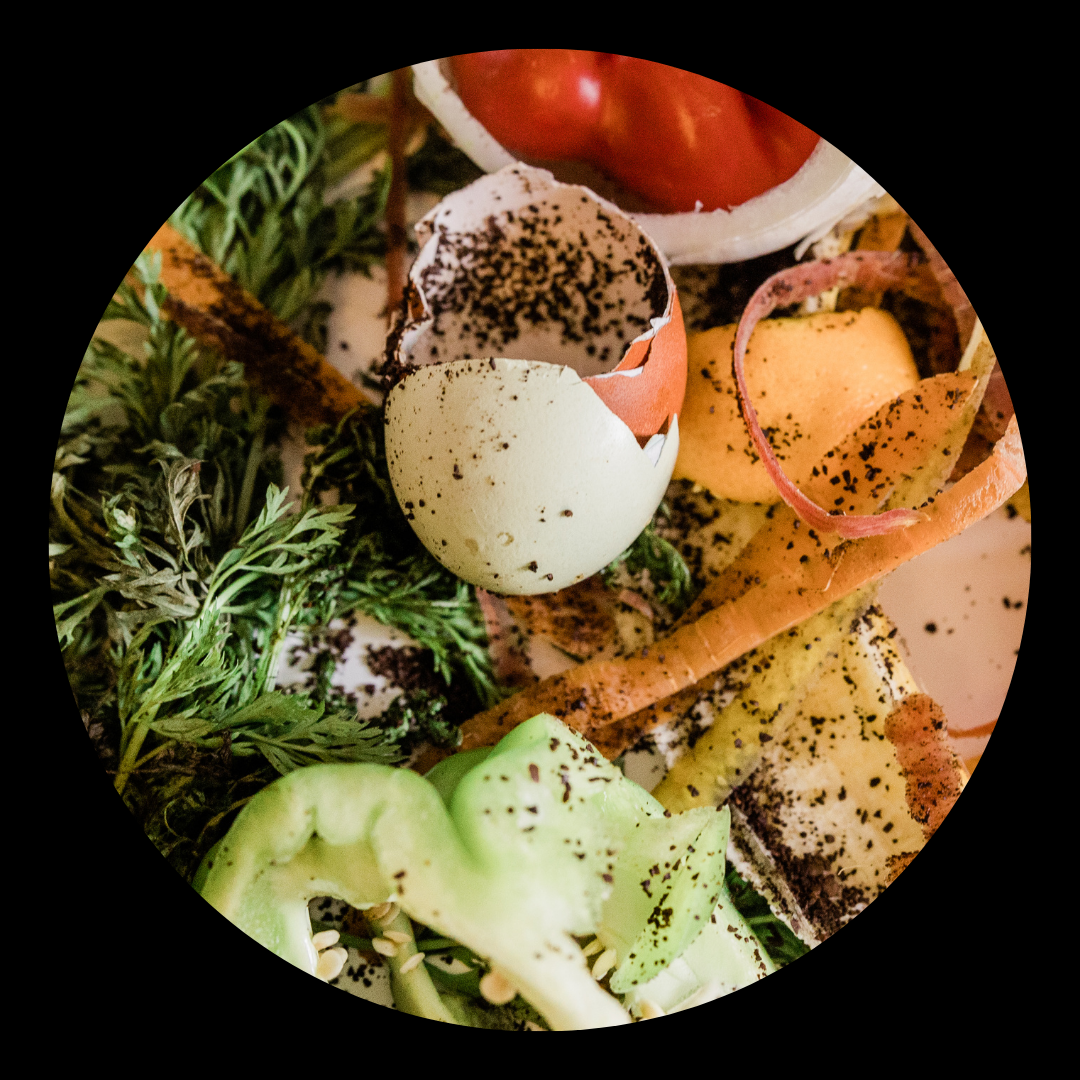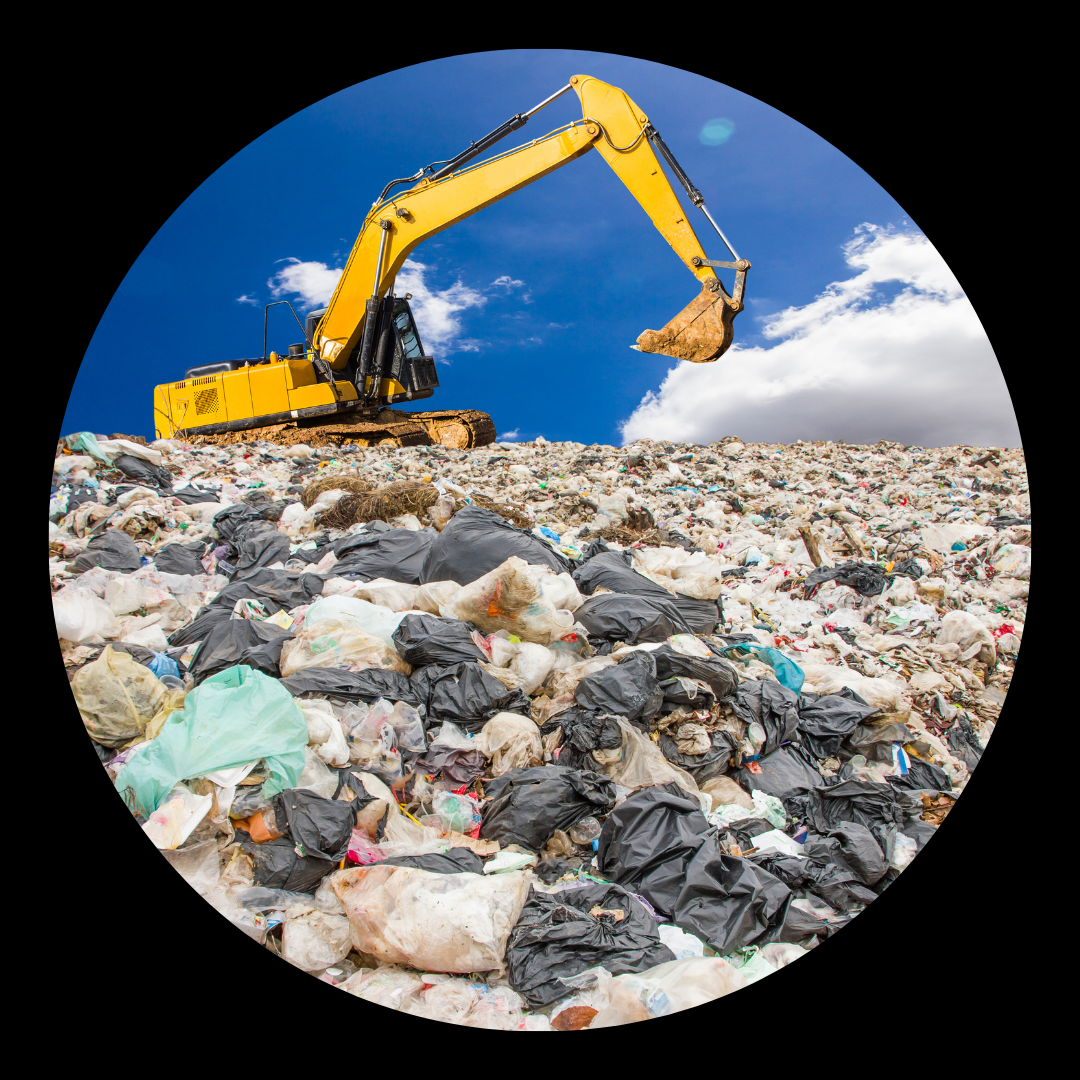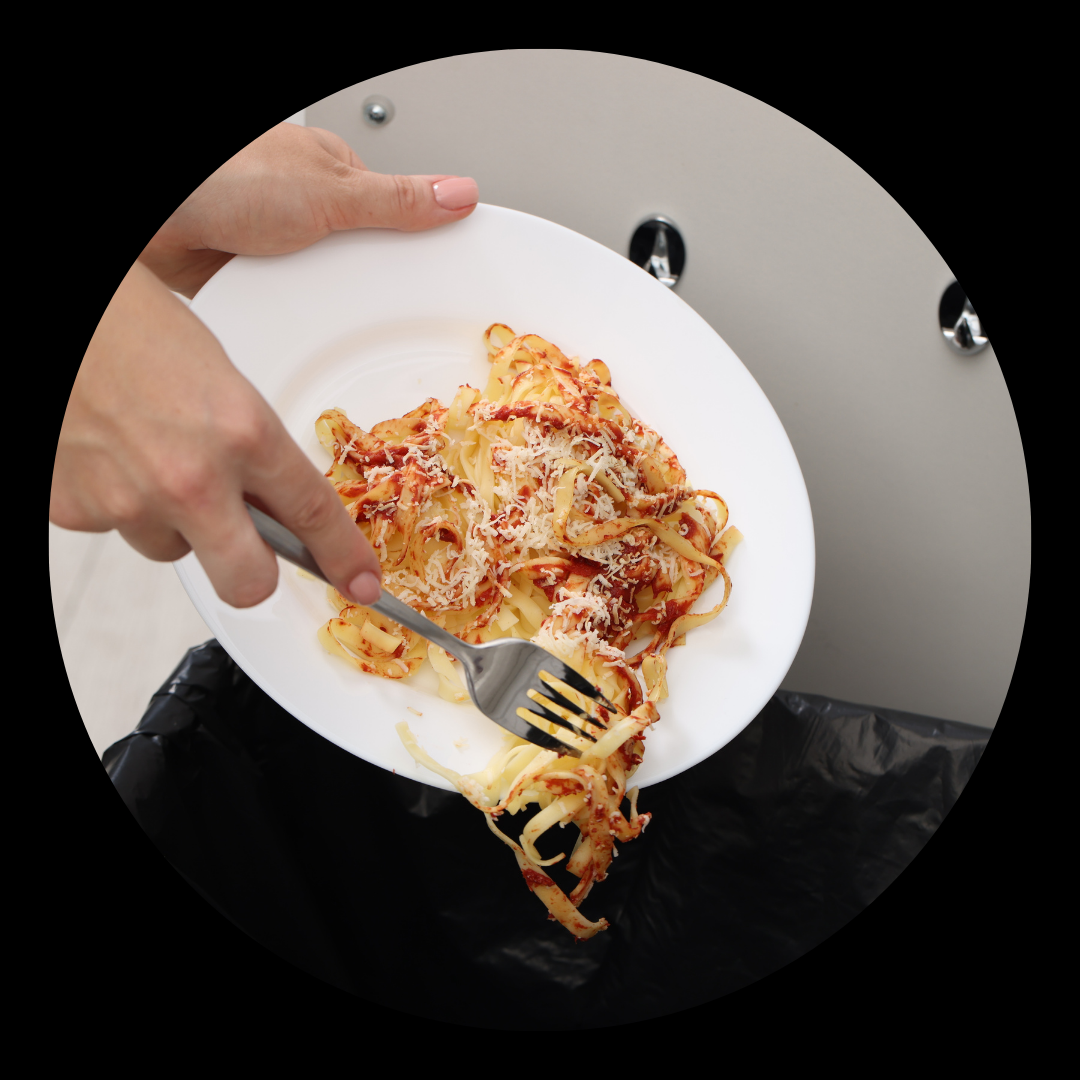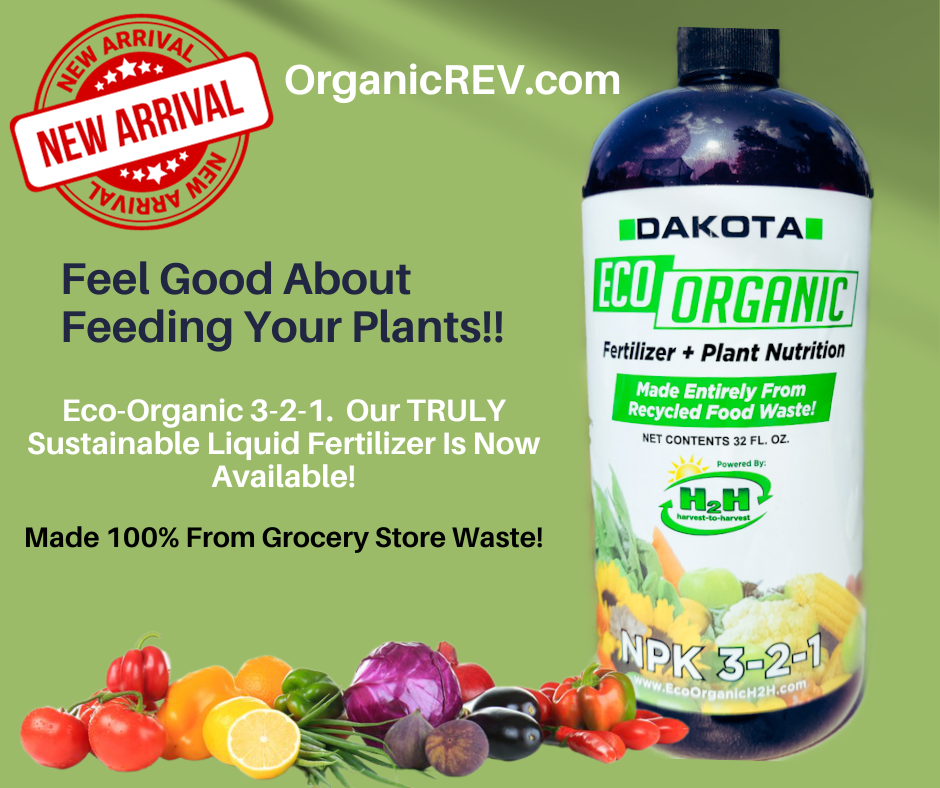
Solving The Food Waste Problem One Bottle At A Time
“Reducing food waste is one of the simplest ways we can save money and help the environment.” – Dana Gunders
Executive Director at ReFED
Organic REV Utilizes Cutting-Edge Harvest-to-Harvest Techology To Create A New Premium Plant Food
Eco-Organic 3-2-1- Powered by Harvest-to-Harvest™ - is an easy to use and highly-effective organic fertilizer. Eco-Organic is the most diverse source of amino acids available to growers today as well as one of the lowest sodium content liquid organic fertilizers available.
This means plant-available nutrition even when the weather gets cold. Using their proprietary manufactured food hydrolysate as the base material, CSS is able to create a premium plant available NPK package.
This product is registered for use in organic food production.
Our Partnership With CSS Results In A Revolutionary New Product!
Organic REV has wanted to add a TRULY SUSTAINABLE liquid organic fertilizer to our lineup for years. When we were introduced to Cal Safe Soil and their H2H technology we knew immediately that we had found our partner.
The CSS technology is able to convert grocery store waste into a highly-effective fertilizer + biostimulant. The patented enzymatic hydrolysis process mimics human digestion and is able to convert waste into high-performing organic fertilizer in just hours. See exactly how this game-changing fertilizer is made.
Eco-Organic: Unique. Sustainable. Effective. Organic.
Eco-Organic 3-2-1 is a liquid fertilizer made from hydrolyzed recycled supermarket food, hydrolyzed fish solubles, organic soy protein and sulfate of potash. This enhanced protein version is designed to provide Nitrogen obtained by the hydrolysis of proteins to their constituent amino acids and short polypeptides.
Eco-Organic 3-2-1 is extremely low in sodium and contains nutrients derived from food to feed soil organisms and improve soil fertility.
Guaranteed Analysis
Total Nitrogen (N) .......... 3% 2.5%
Water Soluble Nitrogen 0.5%
Water Insoluble Nitrogen
Available Phosphate (P2O5)........2%
Soluble Potash (K2O) ...................1%
Derived from: Food Protein Hydrolysate, Fish Protein Hydrolysate stabilized with Phosphoric Acid, and Potassium Sulfate
Organic Bundles!
Eco-Organic Is Designed To Compliment Our Lineup Of Sustainable Products
Total Plant Nutrition Bundle
Superior Value! Superior Plant Nutrition. This bundle is all you need to keep any plant (indoor or outdoor) healthy and happy 365 days a year. Get a 32oz bottle of our NEW Eco-Organic liquid organic fertility AND an 8oz bottle of our concentrated Organic REV growth stimulant.
Apply together or rotate applications. Your plants will thrive!
$32.99
Organic Power Trio
This combination of premium organic soil inputs is all you need for a successful organic garden. Each of our carefully selected products brings a unique value to your plant and they work in tandem to create results greater than the sum of the parts.
-
Organic REV
-
Eco-Organic 3-2-1
-
AMP
$75.97
“Food waste isn’t a trend—it’s an epidemic we need to solve.” – Rob Greenfield
Author, Activist, Adventurer
“Food waste is a global problem that demands local solutions.” – Tristram Stuart
Author, Environmentalist
FOOD WASTE:
A Growing Problem That Affects Us All
Food Waste Is Overwhelming Landfills
Food is the single largest component taking up space inside U.S. landfills, making up about 22% of municipal solid waste.
Food waste in landfills is one of the largest sources of methane emissions in the United States. Methane is a potent greenhouse gas, about 28 to 36 times more effective than CO2 at trapping heat in the atmosphere over a 100-year period. As food waste decomposes anaerobically (without oxygen) in landfills, it releases significant amounts of methane, contributing to climate change.
The Problem is Food Waste - Not Vehicles
Food waste in the U.S. is responsible for the emission of approximately 37 million cars' worth of greenhouse gases annually.
Let that statement sink in... Consider the positive impact of removing the greenhouses gasses of 37 million cars each year.
The Simple act of converting food waste to fertilizer would not only slash global emissions BUT would also dramatically reduce need for harmful synthetic fertilizers!
Food Waste Is Destroying Household Budgets & National Resources.
Food Waste is a burden on individuals. The average American family wastes nearly $1,600 worth of food every year. That is a mortgage payment for most families.
When you look at the bigger picture the scale of the problem is staggering. The resources used to produce the wasted food in the U.S. include 19% of all U.S. cropland, 21% of fresh water supplies, and 18% of fertilizer usage.
The water used to produce the food that ends up being wasted in the U.S. is staggering. It's estimated that about 21% of all freshwater consumed annually in the United States is used to produce food that is never eaten. This wasted water is enough to supply the domestic water needs of every American citizen.
FOOD WASTE IS A MASSIVE PROBLEM - BUT THERE ARE SOLUTIONS
-
Buy food in smaller quantities
-
Be mindful of usage and find creative ways to prepare food before it spoils
-
Compost any home waste
-
Actively support local food banks
-
Feed your plants and garden with Eco-Organic
“By wasting less food, we can combat climate change.” – Liz Goodwin
Director Food Loss and Waste at World Resources Institute
“The greatest threat to our planet is the belief that someone else will save it.” – Robert Swan, OBE
Explorer

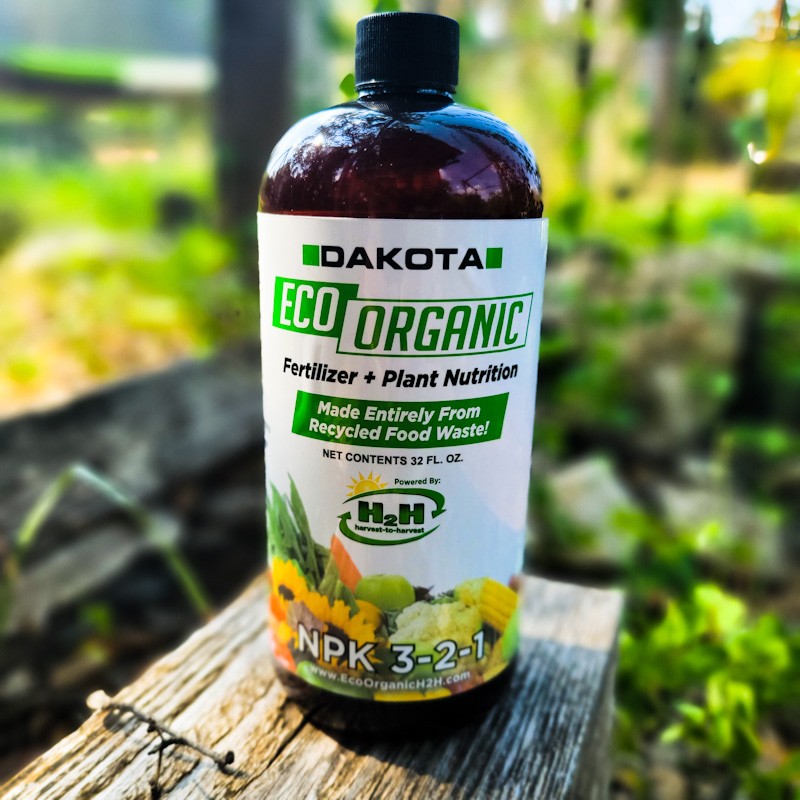
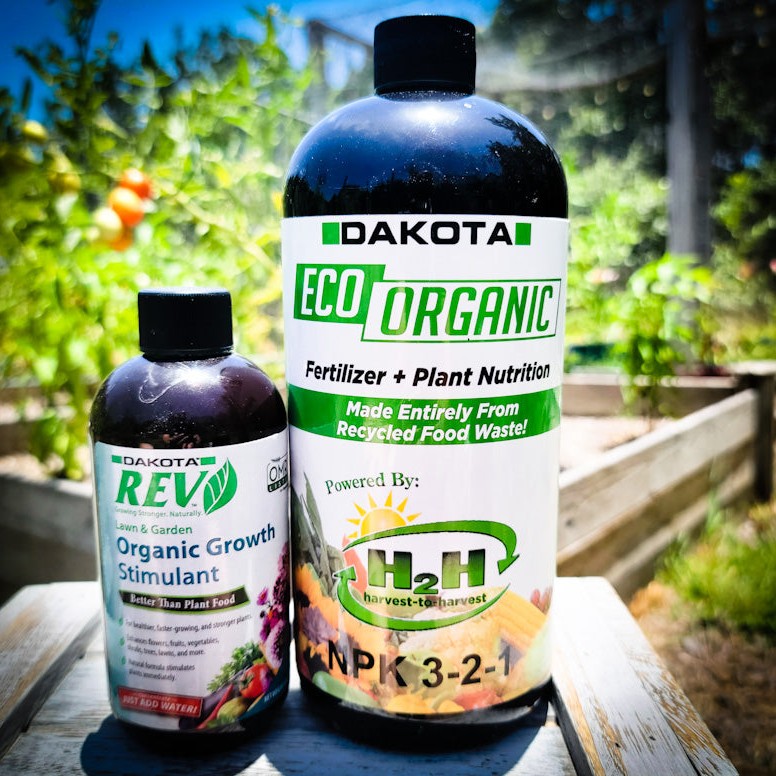
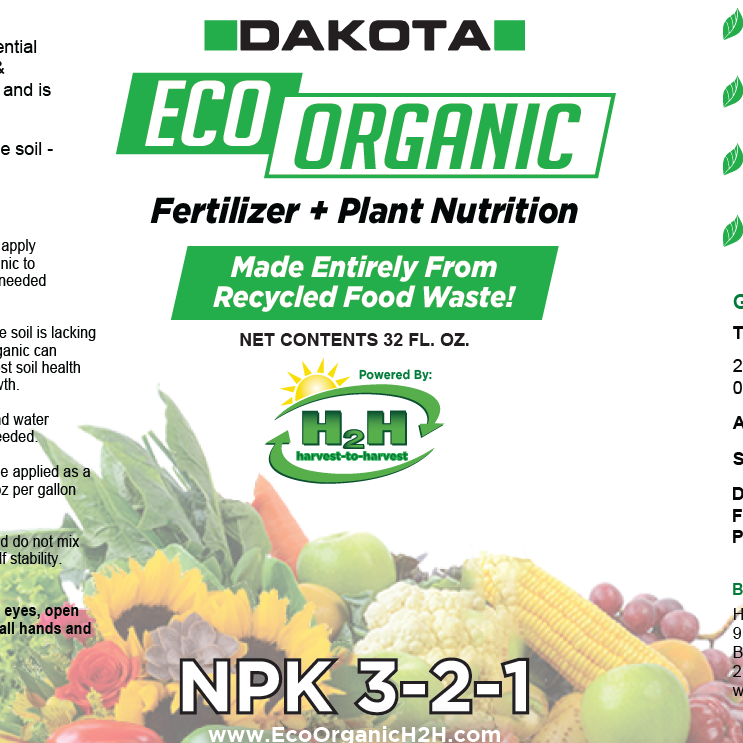
Eco-Organic 3-2-1
BEST SELLER
Eco-Organic 3-2-1 Powered by Harvest-to-Harvest™ is the most diverse source of amino acids available to growers today as well as one of the lowest sodium content liquid organic fertilizers available.
Manufacturted and bottled in the USA

Eco-Organic 3-2-1 Powered by Harvest-to-Harvest™ is the most diverse source of amino acids available to growers today as well as one of the lowest sodium content liquid organic fertilizers available.
Manufacturted and bottled in the USA
